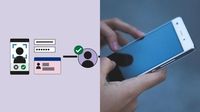On Friday, October 17, 2025, the UK government unveiled a digital version of the HM Armed Forces Veteran Card, marking a significant step in the country’s ongoing push to modernize public services and streamline access to key benefits for former military personnel. Nearly two million veterans across the UK can now apply for and download this digital credential to their smartphones, offering them a faster, more convenient way to prove their veteran status and unlock a range of services and discounts.
The new digital card is available via the government’s One Login app, a platform that’s been under development for several years and is set to become the central hub for digital credentials in the UK. According to BBC News, the rollout allows approximately 300,000 ex-military personnel who already have a physical veterans card to immediately access the digital version, while the remaining 1.8 million eligible veterans can apply for one—a process that can take up to ten weeks.
For veterans, the benefits are tangible and immediate. The card displays the holder’s name, photo, latest service, and date of birth, all protected by robust security features. With just a few taps on their phone, veterans can now prove their status in person to access everything from registering with a GP and mental health support to supported housing, career advice, and discounts at museums or local shops. As The Independent reports, this move eliminates the need to carry a physical card and puts “convenient proof of service directly in veterans’ pockets.”
Louise Sandher-Jones, Minister for Veterans and People, emphasized the importance of this innovation: “Our veterans have given so much in service to our country, and we must ensure they can easily access the support and recognition they are entitled to and deserve. This digital Veteran Card removes barriers and puts convenience back in their hands—whether they’re registering with a new GP, seeking housing support, or simply getting a discount at their local museum.”
The card isn’t just about convenience. It’s also part of a broader government initiative, dubbed the Plan for Change, aimed at making public services simpler, faster, and more accessible. Technology Secretary Liz Kendall underscored this vision, saying, “As we deliver national renewal we are modernising our public services so they work around people’s lives and keep pace with the digital world we live in. The digital Veterans Card will help remove barriers, reduce red-tape and make it easier for people to access the public services they need.”
Currently, the digital card is available for in-person use only, but there are plans to expand its functionality over the coming months. According to ITV News, full end-to-end programmatic verification will be rolled out in the next year, enabling a wider range of uses both in person and online. For now, veterans can use the digital card to register their service background with GPs (potentially unlocking access to programs like Op RESTORE for physical health and Op COURAGE for mental health), confirm eligibility for supported housing through Op FORTITUDE, and connect with career advisors via Op ASCEND. They can also access discounts at participating businesses—a perk that’s expected to be especially popular as Remembrance Sunday approaches.
Security and privacy have been top priorities in the card’s development. The One Login app uses passcodes, Face ID, or Touch ID—mirroring the security features of modern banking apps—to protect veterans’ personal information. Angela Kitching, Director of Campaigns, Policy and Research at the Royal British Legion, welcomed the move, noting, “The fact that the digital Veteran Card will enable veterans to access and use their card more quickly is a positive development. The digital Veteran Card works alongside the existing physical HM Armed Forces Veteran Card, giving veterans greater flexibility and choice.”
But the launch of the digital veteran card comes at a time of heightened national debate around digital identification. Last month, Prime Minister Sir Keir Starmer announced plans to introduce mandatory digital IDs for all UK workers by 2029—a policy aimed at clamping down on illegal working but one that’s drawn sharp criticism from civil liberty groups and privacy advocates. Concerns have been raised about the potential for government overreach, the risks to data security, and the broader implications for civil liberties.
Ian Murray, Minister for Digital Government, has been candid about the role the digital veteran card rollout could play in this debate. While he insists the card is “not a test run” for the wider digital ID system, he acknowledges it could serve as a “demonstration to the public by default.” As he told BBC News, “Using a closed group like the 300,000 veterans is a really good case study to show that it does work. And it will be very beneficial, it shows the technology works, that shows that we can prove and dispense with some of those legitimate concerns around privacy and security and those kinds of issues.”
Still, Murray is clear that the primary purpose of the veteran card is to make life easier for former service members, not to act as a pilot for the government’s broader digital ID ambitions. “The launch of this card is about making the lives of veterans easier, to access government services and the benefits of that card, rather than being about demonstrating the much wider issues that you talk about… in terms of digital ID,” he told ITV News.
For now, the digital veteran card is the first document to be stored in the government’s One Login app, with digital driving licences set to follow as the next major credential. The government’s vision is to eventually transition the platform into the so-called GOV.UK Wallet, where citizens will be able to store and use multiple digital credentials safely and securely.
Applicants for the digital veteran card must first have a physical card and then create a One Login app account, submitting a passport-style photo if required. Once approved, downloading the card takes just minutes—far quicker than waiting for a physical card to arrive by post, which can take up to ten weeks. The digital card is entirely optional, and the physical version will remain available for those who prefer it.
As the government moves forward with its national renewal agenda, the digital veteran card stands as both a practical tool for veterans and a high-profile test of the UK’s ability to deliver secure, user-friendly digital credentials. While the debate over mandatory digital IDs continues, the success of this rollout could shape public opinion and inform future policy—one smartphone app at a time.


